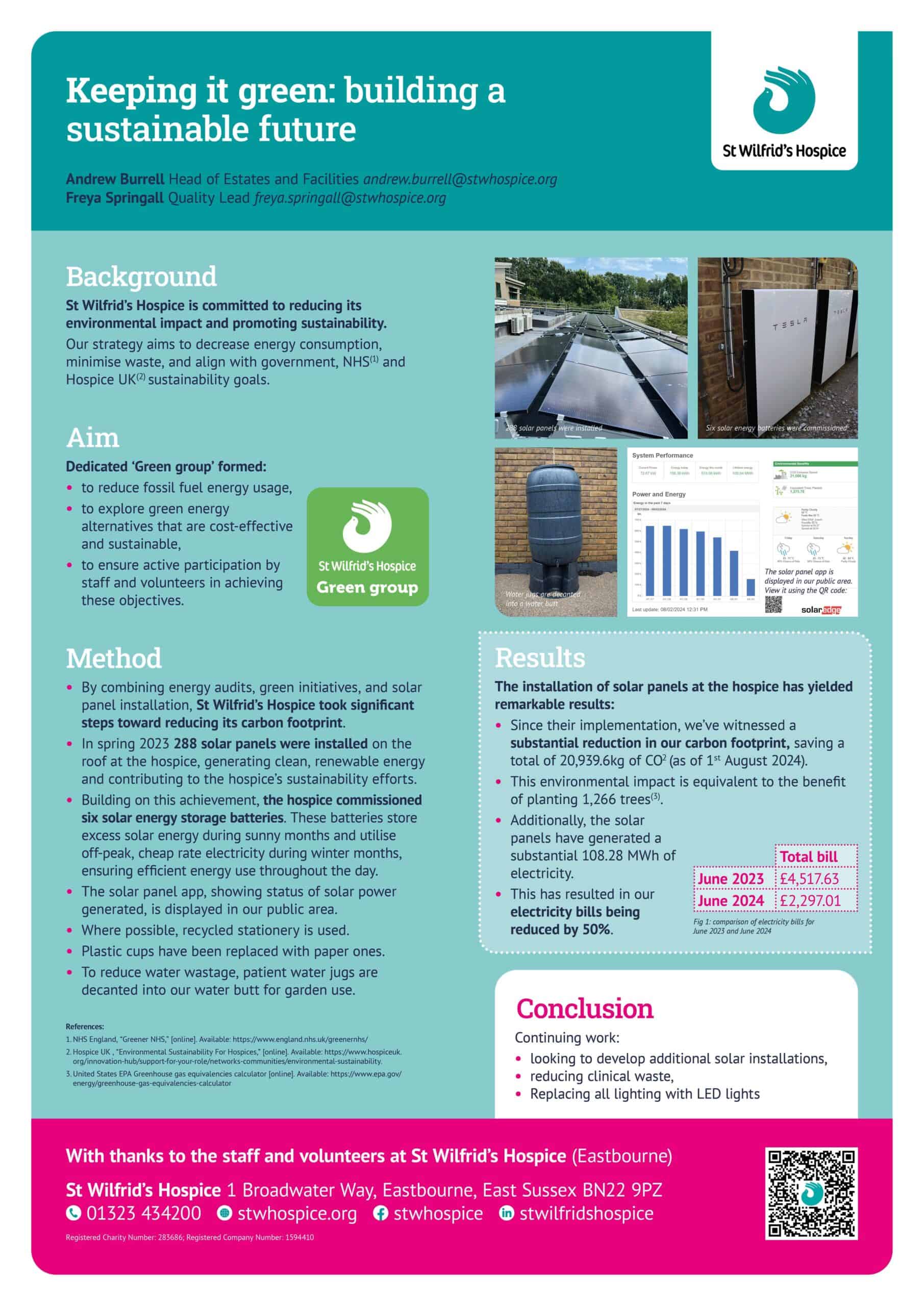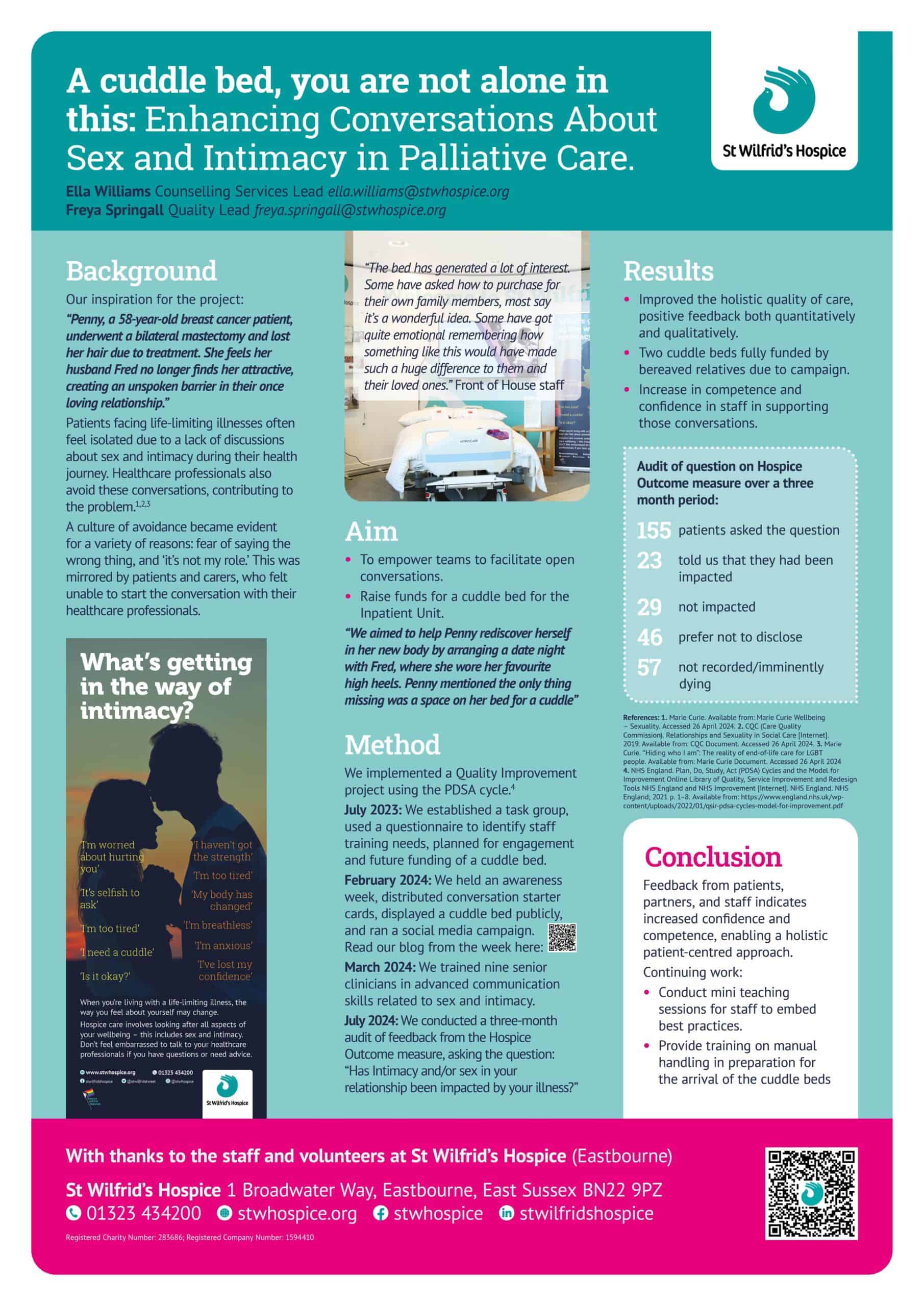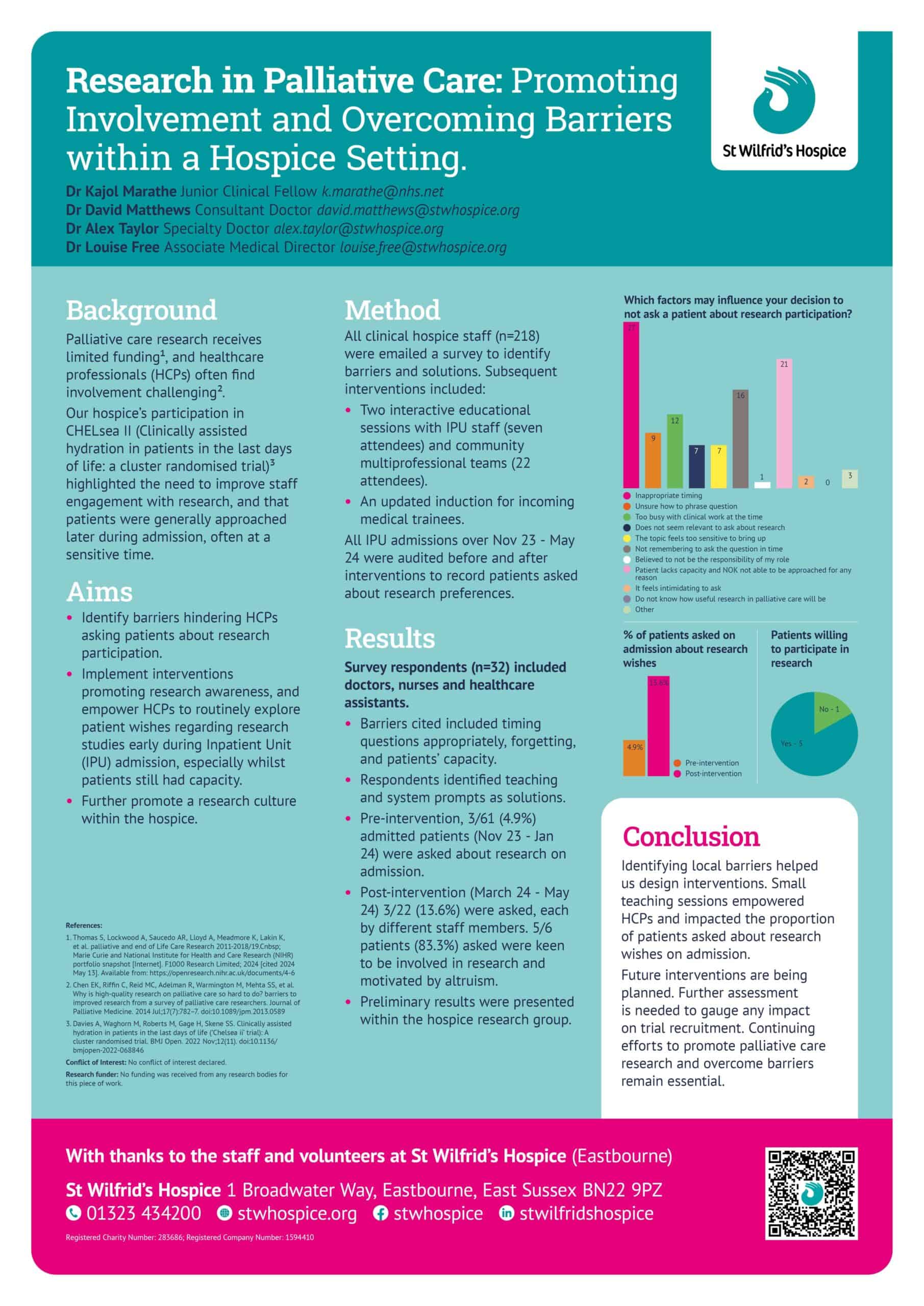As part of our role within the wider palliative community, our staff regularly attend relevant conferences to ensure our practice is up to date. Part of that attendance includes submitting abstracts in order to demonstrate the variety of work that we have undertaken here at St Wilfrid’s Hospice.
The latest abstracts that have been accepted as poster presentations can be seen on this page. Thank you for your interest in our work.



